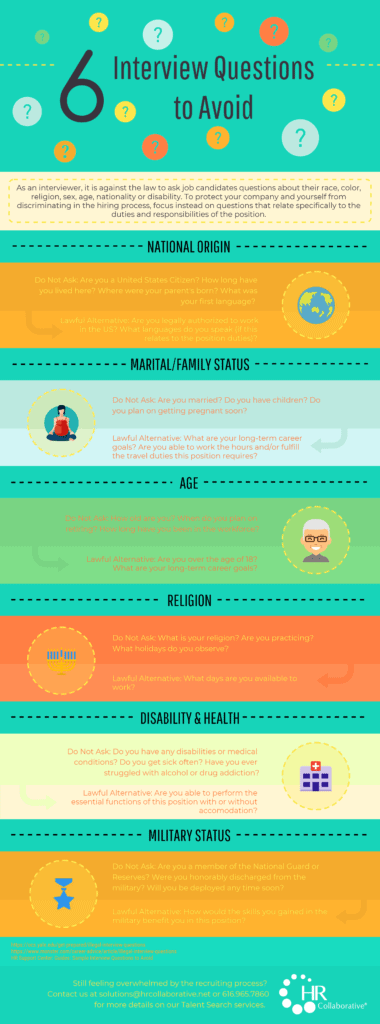How to Improve Employee Retention and Motivation

Employee retention and motivation should be core to your business strategy. High turnover rates can significantly impact an organization’s productivity, morale, and financial health. We’ll share some employee retention ideas that you can incorporate into your regular planning that will pay dividends for years to come.
Why Employee Retention is So Important
Employee turnover is extremely costly. A study by the Society for Human Resource Management (SHRM) found that replacing an employee can cost an average of 6–9 months of their salary and for millennial employees, the cost is triple the average employee. These expenses include recruitment, training, and the hits to productivity.
Turnover contagion—where the departure of one employee triggers others to leave—can further exacerbate these costs. The ripple effect can impact team morale, workload distribution, and overall workplace stability. That’s why it pays to have employee retention programs in place to mitigate these issues before they become a larger problem.
A Quick Note on “Good” Turnover vs “Bad” Turnover
Not all employee turnover is detrimental to an organization. Understanding the difference between good and bad turnover can help manage workforce changes more effectively.
Good turnover includes natural attrition and performance-based departures. Natural attrition occurs when employees leave due to retirement or life changes that are beyond an employer’s control. It is often inevitable and can be beneficial as it allows for fresh talent to enter the organization. Performance-based turnover, when underperforming employees leave, creates opportunities for higher performers to join the team and contribute more effectively to the organization’s goals.
Bad turnover involves involuntary departures and turnover contagion. Involuntary departures happen when high-performing employees leave due to dissatisfaction with the workplace, a lack of growth opportunities, or poor management practices. It can be detrimental as it leads to a significant loss of talent and productivity. Turnover contagion refers to the negative impact when key employees leave, triggering a chain reaction of departures that can destabilize teams and projects. The ripple effect can lower morale and disrupt the overall stability of the workplace.
Understanding Why Employees Leave…
Employees leave organizations for many different reasons, including a lack of career advancement opportunities, poor management, and a struggling work-life balance. Low compensation is the cause only about 10% of the time, which means your organization may need to think outside the box to find the right incentives.
Sometimes, the circumstances that lead an employee to leave are outside the organization’s control, as in cases of personal health or family-related issues. However, the majority of voluntarily exiting employees report that their workplace could have done something to prevent them from leaving.
…And Why They Stay
Employees stay when they feel valued, have opportunities for growth, receive competitive compensation, and work in a positive environment.
Studies show that companies that provide adequate professional development opportunities and resources are more likely to retain their employees. People are also much more likely to stay with a company where they feel their values are aligned with the company’s values—not just on paper but in practice.
Having a strategic and effective HR team on your side is critical to creating a personnel retention plan that will allow you to keep a pulse on all of these factors and take the necessary steps to keep high-performing employees in place.
Effective Employee Retention Strategies
Build a Strong Onboarding Program
A strong onboarding program is the foundation of good employee retention, especially since new hires are particularly vulnerable to turnover. Studies have shown that up to 20% of staff turnover happens in the first 45 days. That’s why you need to have effective onboarding to help new hires integrate into the company culture, understand their roles, and establish connections with colleagues. HR can play a critical role in designing and implementing onboarding programs that ensure new employees feel welcomed and prepared from day one.
Foster a Positive Work Environment
Creating a positive work environment is essential for employee satisfaction and retention. And it starts at the top. That’s why HR should have a seat at your leadership table. They can help guide leaders on how to promote and reflect a culture of respect, inclusivity, and collaboration. They can also help managers design regular team-building activities, more open communication channels, and supportive supervisory practices that contribute to a healthy workplace atmosphere.
Offer Competitive Compensation and Benefits
Competitive compensation and benefits packages are a key part of attracting and retaining top talent. You should regularly review and benchmark salaries and benefits to make sure they meet or exceed industry standards. Additionally, offering flexible benefits that meet your employees’ unique needs is another great way to reward good work.
Resolve Staff Conflicts
Unresolved conflicts can lead to a toxic work environment and high turnover rates. That’s why you should implement clear conflict resolution policies and provide regular training for managers on effective conflict management techniques. This is another area where you can rely on the strong conflict management background of an experienced HR professional.
Provide Opportunities for Career Development
Employees are more likely to stay with organizations that invest in their growth. Offering your staff training programs, mentorship opportunities, and clear career progression paths will result in stronger, more loyal employees. Encouraging continuous learning and development fosters employee loyalty and motivation. And in today’s fast-moving environment, providing upskilling and reskilling opportunities is critical for organizational sustainability.
Prioritize Work-Life Balance
Work-life balance is a significant factor in employee retention. Your team can support work-life balance by promoting flexible work arrangements, such as remote work options, flexible hours, and paid time off policies. Encouraging employees to take breaks and prioritize their well-being will also reduce burnout and help improve overall job satisfaction.
Recognize and Reward Hard Work
Recognition and rewards are powerful motivators, for some employees more than others. Your team should take steps to establish procedures that regularly acknowledge and reward employee achievements, through formal awards, bonuses, or simple verbal recognition. You should also identify your employees’ languages of appreciation to understand the best way to recognize their work.
Schedule Regular Review and Feedback Sessions
You should have regular performance reviews and feedback sessions to provide employees with constructive insights into their work and areas for improvement. Having an HR team can ensure these sessions are conducted effectively by focusing on employee development and goal-setting.
Create a Strong Company Culture
A strong company culture will both attract and retain employees. Your leadership and HR team needs to play a vital role in defining and promoting the company’s values, mission, and vision. By embedding these elements into everyday practices and communications, you can help create a cohesive and motivated workforce.
Enable Flexible Work Schedules
Flexible work schedules will accommodate the diverse needs of employees and improve the overall work-life balance. HR can implement policies that allow for flexible hours, job sharing, or telecommuting options. Flexibility in work schedules can significantly improve employee satisfaction and retention.
How to Build a Talent Retention Strategy
Assess Current Strategies
Analyzing turnover data is the first step in understanding your organization’s retention challenges. Look at metrics such as overall turnover rate, voluntary vs. involuntary turnover, and turnover by department, role, or demographic group. You should be able to identify patterns and trends to determine which areas are most affected by turnover, such as specific roles or seasons.
Gather Feedback
Understanding the reasons behind employee turnover requires direct input from your workforce. Consider conducting anonymous surveys to gauge employee satisfaction and identify common concerns. You should also hold focus group discussions, stay interviews, exit interviews to gain deeper insights into why employees stay or leave.
Set Clear Goals
Based on your analysis and feedback, define what success looks like for your retention strategy. Set clear, measurable objectives such as reducing overall turnover by a certain percentage, improving employee satisfaction scores, or increasing the average tenure of employees. Establishing these goals provides direction and benchmarks for evaluating the success of your retention efforts. You should also make sure that these goals are aligned with your organization’s broader business objectives and are realistic yet stretch you to improve.
Develop and Implement Programs
There are several different types of employee retention programs you can implement, including:
- Career development: Create and promote opportunities for professional growth, such as training programs, mentorship, and clear career paths.
- Competitive compensation and benefits: Regularly review and adjust compensation packages to ensure they are competitive within your industry.
- Work-life balance: Implement flexible working arrangements, such as remote work options, flexible hours, and generous leave policies.
- Recognition and rewards: Establish systems for recognizing and rewarding employee achievements, both formally and informally.
- Positive work environment: Foster a supportive and inclusive workplace culture through team-building activities, diversity initiatives, and open communication channels.
- Conflict resolution: Develop clear policies and training for managers on resolving conflicts effectively and maintaining a harmonious workplace.
Monitor and Adjust
Implementing retention programs is not a one-time effort; it requires ongoing evaluation and adjustment. Regularly review the effectiveness of your programs by tracking key metrics, such as changes in turnover rates, employee satisfaction scores, and the achievement of your goals.
Conduct follow-up surveys and feedback sessions to understand how employees perceive the changes and to identify any new issues that arise. Then you can use this data to make necessary adjustments to your programs and strategies, ensuring they remain relevant and effective in retaining your top talent.
Talk to Staff Retention Experts
At HR Collaborative, we specialize in developing and implementing effective retention strategies that are built for the organizations we work with. Contact our team today to learn how we can help you create a motivated and loyal workforce.
Share This Article
































































































